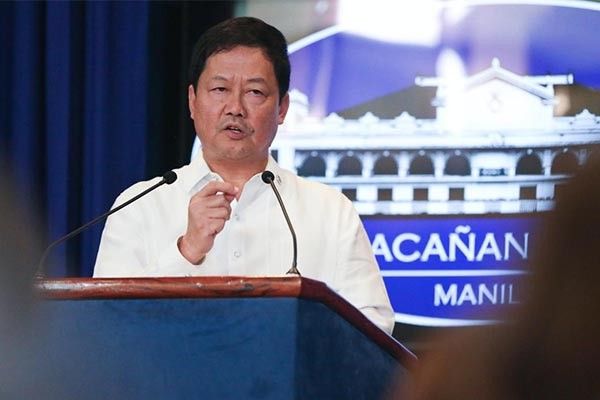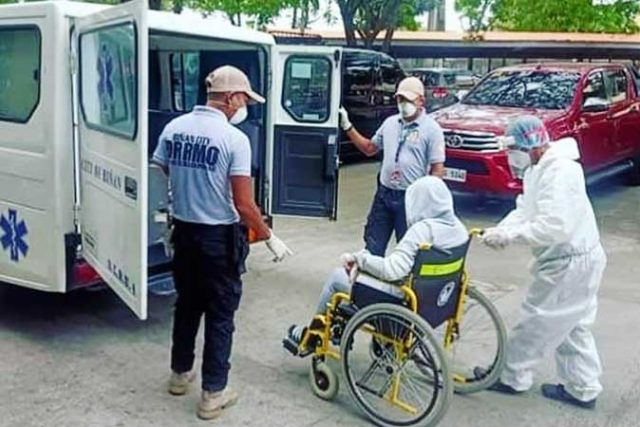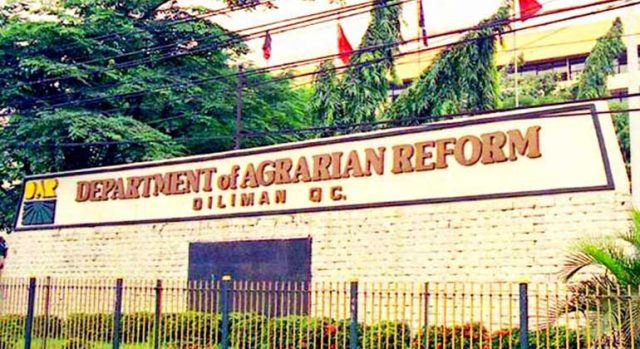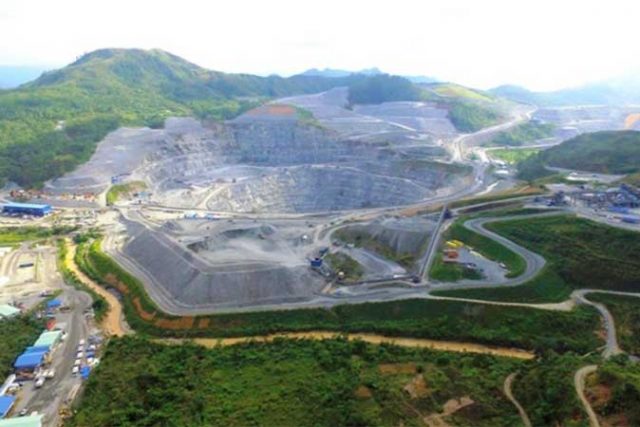Duterte says Philippines won’t end sea patrols
THE PHILIPPINES won’t end patrols in the South China Sea, President Rodrigo R. Duterte said on Wednesday night, adding that the country’s sovereignty is nonnegotiable.
Tensions over the sea, which China claims almost entirely, have spiked as Beijing refuses to withdraw vessels from Philippine waters and Manila boosts sea patrols. Mr. Duterte is under growing domestic pressure to take a harder stance, but has been reluctant to confront China over the issue.
“I read China said we should leave,” the tough-talking leader said in a televised speech. “I now say: Do not leave. Period,” Mr. Duterte told Philippine ships that held drills in the disputed waterway.
Mr. Duterte said Philippine sovereignty over the disputed waterway is nonnegotiable even if it owes China a “debt of gratitude.”
“There are things which are not really subject to a compromise,” the President said. “I hope they will understand, but I have the interest of my country also to protect.”
China’s Foreign Ministry earlier demanded that Manila stop its sea drills in the South China Sea.
Mr. Duterte said the Philippines would not go to war with China over the South China Sea, citing the country’s long-standing friendship with its neighbor.
“We do not want war with China. China is a good friend,” he said in a televised speech, citing Beijing’s donation of coronavirus vaccines.
“So China — let it be known — is a good friend and we do not want trouble with them, especially a war,” Mr. Duterte said.
China has donated at least a million doses of CoronaVac to the Philippines.
Mr. Duterte blamed retired Supreme Court Justice Antonio T. Carpio and former Foreign Affairs Secretary Albert F. Del Rosario for China’s island-building activities in the South China Sea.
He said both had failed to stop Chinese incursions in the area under the administration of his predecessor Benigno S.C. Aquino III.
“I have one question for Carpio and Albert: If you are bright, why did we lose the West Philippine Sea?” Mr. Duterte said in Filipino, referring to areas of the sea within the country’s exclusive economic zone.
He said China’s occupation of certain features in the water happened during their time.
Mr. Carpio and Mr. Del Rosario led the country’s legal fight against China’s claims in the area. An international tribunal in 2016 favored the Philippines and rejected China’s claim to more than 80% of the sea based on a 1940s map.
Mr. Duterte insisted that invoking the legal victory, which he said was nothing but “paper,” constitutes going to war with China.
Mr. Carpio and Mr. Del Rosario and other maritime experts have said the Philippines does not need to go to war to defend its territories.
In a statement on Thursday, Mr. Carpio noted that it was Mr. Duterte who announced that he was “setting aside” the ruling in favor of seeking loans and investments from Beijing worth $22 billion.
‘GALUNGGONG’
“Today, less than 5% of those loans and investments have materialized even as President Duterte is already leaving office next year,” he said. Mr. Duterte had also allowed China to fish in the country’s territorial waters, he added.
“We even import galunggong (round scad) now from China, the same galunggong that Chinese fishermen take in the West Philippine Sea.”
Mr. Duterte also “remained absolutely silent” when China seized a sand bar just two nautical miles from Thitu Island near Palawan province in 2017, the former magistrate said.
“China’s seizure of Sandy Cay has resulted in the loss of one-third of our territorial sea in Pag-asa, a loss of maritime area three times larger than the land area of Quezon City,” Mr. Carpio said. “Still, the President has declared ‘I simply love President Xi Jinping.’”
“Filipinos deserve, and should demand, a President who loves Filipinos first and foremost and who will uncompromisingly defend Philippine sovereignty and sovereign rights in the West Philippine Sea,” he added.
Mr. Duterte last week said he would only deploy warships to the South China Sea once Beijing starts drilling for oil and taking other key resources.
He also said he would not quarrel with China over fish since there is not enough in the area, something that the local fishery bureau and political analysts corrected.
He said drilling oil from areas within the Philippines’ exclusive economic zone is not part of the country’s agreement with China.
He blamed his predecessor for failing to maintain Philippine presence in the area. Mr. Duterte said the Philippines would not be able to gain control of its territories in the disputed waterway “without bloodshed.”
The Philippines has fired off several diplomatic protests against China after authorities spotted a swarm of Chinese vessels, including six war ships within its waters in the South China Sea.
Two Houbei class missile warships were spotted at Mischief Reef, one Corvette class warship at the Fiery Cross Reef and one navy tugboat at Subi Reef, according to a Philippine task force on border security.
Two Chinese coast guard vessels were also spotted at Thitu Island, which the Philippines calls Kalayaan, according to a report based on patrols by Philippine authorities on April 11.
The Philippine task force said more than 200 Chinese ships were scattered in waters within its exclusive economic zone. About 15 vessels either manned by Chinese militia, People’s Liberation Army Navy or the Chinese Coast Guard had also been spotted at the Scarborough Shoal.
Meanwhile, about 240 Chinese vessels that China claims are ordinary fishing vessels have spread out to a wider area in the South China Sea, the agency said. The ships allegedly manned by Chinese maritime forces were scattered across the Spratlys, about 175 nautical miles west of Palawan province, it added.
It said 136 vessels were seen at Gaven Reef and more than 60 vessels were at McKennan Reef.
The rest of the ships were scattered in other parts of the disputed territory — 11 at the Second Thomas Shoal, nine at Whitsun Reef, six at Mischief Reef, five at Loaita Island, four at Thitu Island, three at Subi Reef and one at West York Island. The ships were about 60 meters long.
The Philippines has summoned China’s ambassador to convey its “utmost displeasure” over the continued presence of Chinese militia vessels at Whitsun Reef.
Meanwhile, Senator Risa N. Hontiveros-Baraquel said the Philippines is not indebted to China despite its donation of coronavirus vaccines.
“The donated vaccines should not be in exchange for our rights in the West Philippine sea,” she said in a statement in Filipino.
Senator Grace S. Poe-Llamanzares said the government should assert the country’s rights and protect Filipino fishermen by continuing to patrol the sea.
“Our presence in the West Philippine Sea is an unyielding display that we are standing our ground on what is ours and securing our people’s productive access to our marine resources,” she said in a statement. — Kyle Aristophere T. Atienza and Vann Marlo M. Villegas












